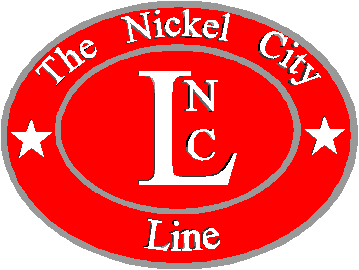

|
Historical Overview of the |
|
Nickel City Line |
|
In 1840 a young and wealthy English industrialist name Sabastian E. Nickel came to the Allegheny Mountains of Pennsylvania. Mr. Nickel was drawn to this region of the United States for not only the beauty of the mountains and valleys, but also for the wealth in coal and ore that lay hidden within them. |
After several years of surveying the region, Nickel purchased several large tracts of land in the Allegheny Mountains that he believed would prove rich in minerals and ore. He began to organize his mining industry with the backing of his family fortune in 1848. He established a town to serve his mining interest. The town was named after its founder and was called Nickel Township. In 1851, Sabastian Nickel was granted a Charter by the Commonwealth of Pennsylvania to build a railroad from his properties in the mountain region to Harrisburg Pennsylvania. That railroad would become the Nickel City Line. |
Word of Nickelís mining operations had brought many people seeking work into Nickel Township. The population swelled by 65% in two years, prompting a name change from Nickel Township to Nickel City. The railroad would also inherit this name as it was the originating point and overall purpose for the existence of the rail line. By July of 1854, the Nickel City Line had run from Nickel City to Lewistown, Pennsylvania. On May 18, 1857 the Nickel City Line reached Harrisburg, Pennsylvania. In 1860 a branch line from Waterloo, Pennsylvania extended to Shippensburg Pennsylvania. By 1870 the Nickel City Line (NCL) extended west to Ridgeway, Pennsylvania. |
|
Although established to move coal and ore from Nickelís mining interests, the fast route through the Appalachian and Allegheny Mountains was viewed by many as a more efficient means to move goods and services east and west. The Nickel City Line began hauling freight and passengers by 1872. This expanded rail traffic soon caught the eye of the largest railroad in the country, the Pennsylvania Railroad (PRR). |
|
The Pennsylvania Railroad sought to take control of the NCL for its own interests. However these plans were placed on hold with the advent of the Civil War and the Johnstown Flood. These events caused numerous problems for the Pennsylvania Railroad. Meanwhile, the NCL saw an opportunity to improve service and operations. |
|
By 1915 the Pennsylvania Railroad began to revisit plans to take over the NCL. Again these plans were interrupted by the advent of World War I. With Federal takeover of the railroads, the NCL saw increased traffic and improvements to its lines. The NCL was viewed as a vital link in the war effort. |
|
In 1920, control was returned to the NCL management. The line continued to move freight and passengers efficiently across mountain territory. But the NCL Management began investing in other business ventures as a means of increasing capital and off setting potential financial losses in the future. The stock market crash of 1929 had a significant impact on all investors and companies. But the NCL management had diversified its investments and earnings to soften the blow for the railroad company. |
| By 1939 the railroad was helping the war effort again, this time for World War II. Post war business boomed and profits soared. NCL invested heavily in the railroad and other ventures, further creating a solid corporation that could fend off potential threats by the Pennsylvania Railroad and others. |
| By 1966, the threat of the Pennsylvania Railroad was diminished as the PRR sold off a significant portion of its property to competing railroads. The Pennsylvania Railroad was no longer a rail giant. It was just another railroad struggling to survive in a fiercely competitive world. |
|
By 1975 the Pennsylvania Railroad had seen the rise and fall of its former trackage to railroads such as the New York Central and the Penn Central. A new railroad had taken possession of the former PRR trackage. The new railroad was named Conrail. The Chessie System, an ever growing conglomerate of railroads acquired the old Erie Lackawanna. Amtrak would take over the old Penn Central passenger routes. |
|
In 1995 there are many changes on the horizon. Conrail is considering a sale of their Company to the Chessie System. Both the Chessie System and the Pennsylvania Railroad have leased trackage rights from the NCL. NCL business is at the peak of activity. What the future holds is anyoneís guess. Only time will tell. |
This web site and all its contents, are Copyright (C) 2002-2011 by the Nickel City Line, Prince William County, Virginia